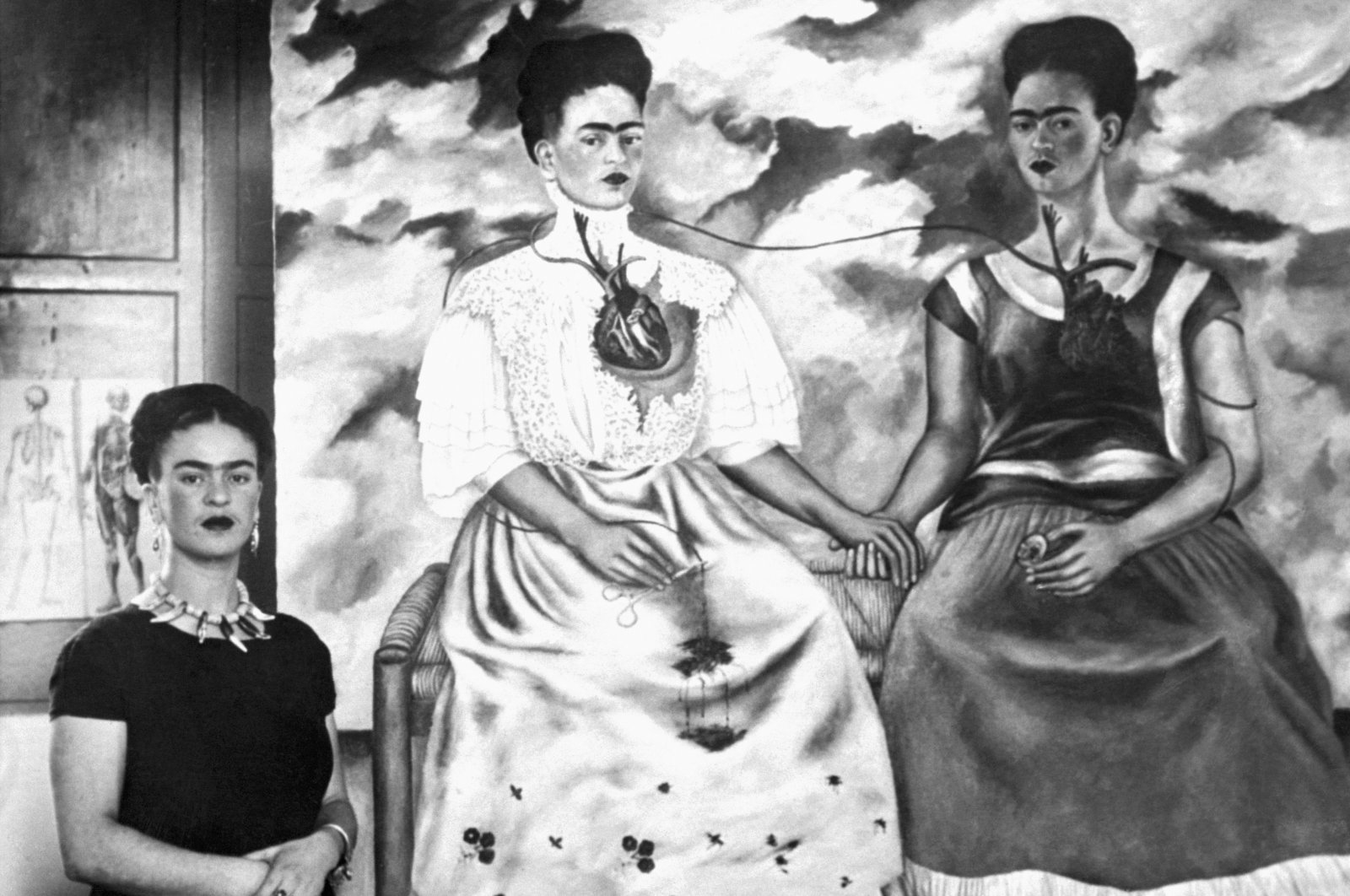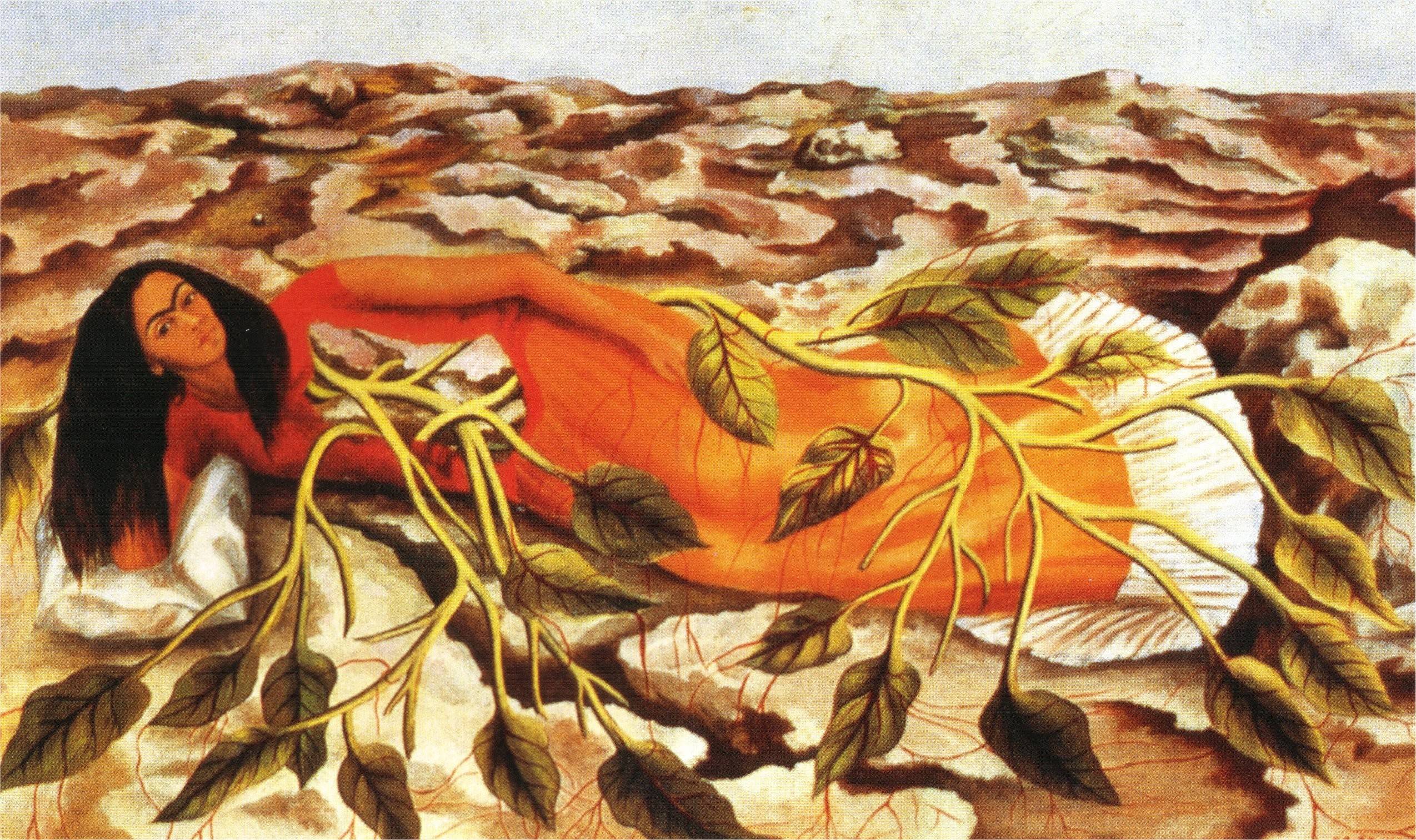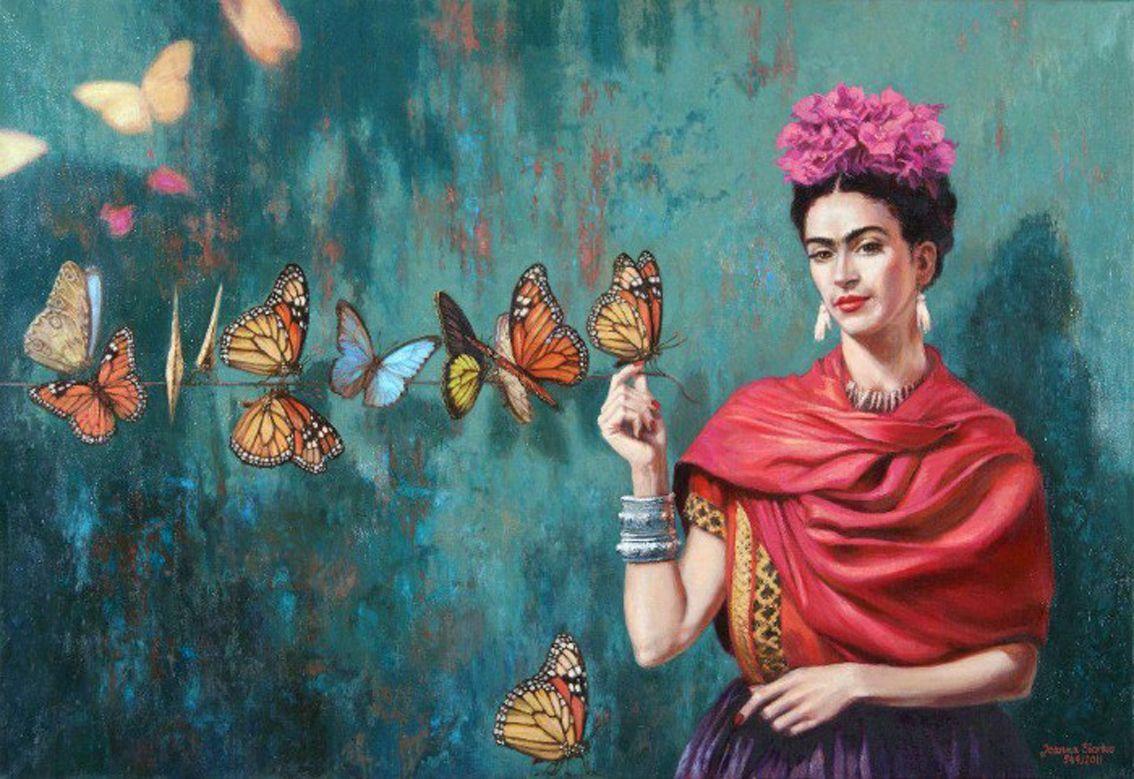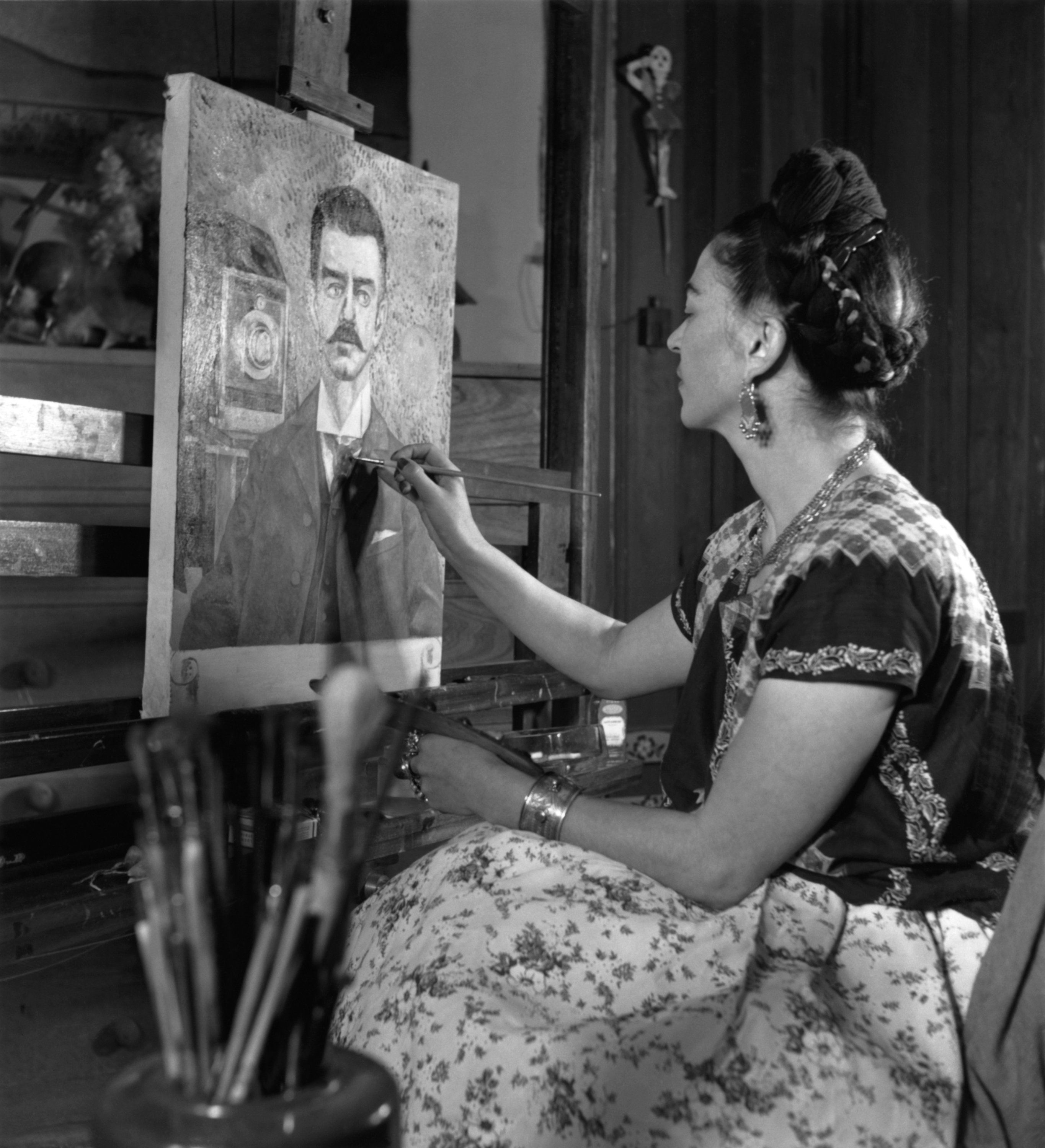Những tác phẩm của Frida Kahlo, với tư cách là một nghệ sĩ vẫn còn khá xa lạ cho đến cuối những năm 1970, khi tác phẩm của cô được các nhà sử học nghệ thuật và các nhà hoạt động chính trị khám phá lại.
Và rồi đến đầu những năm 1990, cô không chỉ trở thành một nhân vật được công nhận trong lịch sử nghệ thuật mà còn được coi là một biểu tượng cho Chicanos, phong trào nữ quyền và phong trào LGBTQ.
Chúng ta sẽ cùng đến với Frida Kahlo, Artist of Mexico trong bài nghe cùng Spotlight tuần này. Câu chuyện về Frida Kahlo đã được quốc tế tôn vinh như là biểu tượng của truyền thống dân tộc và bản địa Mexico và bởi các nhà nữ quyền.Frida Kahlo, Artist of Mexico
Liz Waid and Bruce Gulland tell about the life and art of Mexican artist Frida Kahlo. She painted about love and loss, disability, and traditional Mexican life.Voice 1
Welcome to Spotlight. I’m Liz Waid.Voice 2
And I’m Bruce Gulland. Spotlight uses a special English method of broadcasting. It is easier for people to understand, no matter where in the world they live.Voice 1Imagine a painting of two women. They have the same face. But one is wearing a white European-style dress. The other wears a traditional Mexican skirt. You can see both of their hearts. And a single blood vein connects them. The woman in the white dress has cut a vein with scissors. Her dress is stained with blood. The women are holding hands. Behind them, there are dark clouds, like a coming storm.Voice 2This is a painting called The Two Fridas, by the Mexican artist Frida Kahlo. This is a painting of herself. She painted it after she and her husband divorced. It symbolizes the pain and longing of this lost relationship. Kahlo often painted herself. But she did not just paint what she could see. Her painting expressed what she felt, with symbols. Using these symbols, she was able to paint about disability, love, and the traditional Mexican life. She is still an important artist today. Today’s Spotlight is on Frida Kahlo.Voice 1Frida Kahlo was born in Mexico, in 1907. She began painting when she was very young. But she did not think of it as a job. Instead, she wanted to be a doctor. She even attended school to become a doctor. But when she was 18, she was in an accident. Kahlo was riding on a bus. The bus driver crashed into an electric train, going full speed. The crash hurt Kahlo very badly. She broke her legs, foot, pelvis, and collar bone. Worst of all, a metal rail speared her through the stomach. It shattered parts of her spine. And it made it so she could not have children. Because of the crash, she lived in pain for the rest of her life.Voice 2Later, Kahlo would paint about her pain. One of the most famous of these paintings is called Broken Column. It is another self-portrait. In it, she is naked from the waist up. Small, white tears fall from her eyes. All over her body, nails stick out from her skin, though there is no blood. But this is not the strangest part. From her neck to her waist, there is a huge gash. It looks as if it has been left by an earthquake. Inside the gash is a tall, stone column. It is like those that hold up old houses. And the column is broken into pieces. A yellow desert stretches off behind her.Voice 1The crash destroyed Kahlo’s body. She would never be a doctor. But the crash also gave her time to paint. And, in 1928, she met Diego Rivera. Rivera was a famous Mexican painter. He painted murals. In making a mural, a person paints directly onto a wall. Rivera’s murals were very large, public pieces. They showed the indigenous people of Mexico and industrial workers. Kahlo asked Rivera what he thought of her painting. He wrote later about that first meeting with Kahlo. He said her paintings: “had a deep honesty, and an artistic personality of their own.” He said it was clear “that this girl was a true artist.”Voice 2Rivera encouraged Kahlo’s painting. And soon, they fell in love. They married in 1929. Together, Kahlo and Rivera traveled the world, painting. But the marriage was not easy. Both of them had many affairs. They often lived apart. They divorced, and re-married. But they also loved each other deeply. Once, Kahlo wrote to Rivera in a letter:Voice 3“Nothing compares to your hands. Nothing is like the green-gold of your eyes. My body is filled with you for days and days. You are the mirror of the night. The flash of lightning. The dampness of the earth. The hollow of your armpits is my shelter. My fingers touch your blood. All my joy is to feel life spring from you.”Voice 1Many of Kahlo’s paintings are about their troubled relationship. In 1943, she painted Diego on my Mind. It is another self-portrait. In this painting, she wears a traditional Tehuana costume. This white robe wraps around her like a butterfly’s chrysalis. Strange, white threads stretch out from her body. It is like they are holding her in place. And on her forehead is a picture of Rivera. Kahlo painted this after their divorce. It shows that, even though they were apart, she was still thinking of him.Voice 2Kahlo did not find immediate success as a painter. Rivera helped her meet many people. And after a time, she began to show her paintings in galleries. But many people did not take her seriously. They did not believe her art was there because of her skill. They believed she found success because her husband was famous. In 1938, Kahlo went to New York. She had her first solo exhibition. The gallery only displayed her paintings. But the news media did not treat her with respect. A writer for Time Magazine saw the exhibition. He said that Kahlo’s paintings were weak. He did not like the bright colors. And he compared her paintings to ideas of a child.Voice 1But soon, people began to recognize Kahlo’s work. The Louvre is a famous art museum in Paris, France. In 1939, the museum bought one of Kahlo’s Paintings. The painting was called The Frame. The Louvre had never purchased a painting by a Mexican artist before. It was a great achievement for her to be the first. Other artists also encouraged Kahlo. André Breton was a French writer. He called her art “a ribbon around a bomb”. He helped her find places to show her work.Voice 2But Kahlo was most famous in her native country, Mexico. This is partly because she used images from Mexican culture. For example, one of her paintings is called The Love Embrace of the Universe, the Earth (Mexico), Myself, Diego, and Señor Xolotl. The painting shows the universe as a mother. This woman holds Kahlo and Rivera in her arms. From those arms grow the plants of Mexico. The painting also shows Cihuacoatl holding her. Cihuacoatl is a goddess from Aztec stories. The Aztecs were one of the original peoples of Mexico. And Cihuacoatl was their mother goddess. By including Cihuacoatl, Kahlo shows a motherly love for her husband. But she also shows that her mother is Mexico. It is the thing that gives her life.Voice 1Just as Kahlo was becoming more famous, she began to get sick. Her health was always bad. But it began to get much worse. The pain in her back made it so she could not stand or sit long. In 1953, doctors removed one of her legs after an infection. She lived either in a bed or a wheelchair. And she abused medicine to manage her pain. Later in the next year, she got sick from pneumonia. This made it hard for her to breathe. She had a terrible fever and was in a lot of pain. She died in 1954. She was only 47 years old.Voice 2
In the years since she has died, Frida Kahlo has become very famous. Her paintings are world-famous. In 1984, the Mexican Government even declared that her paintings were part of their national heritage. Women celebrate her for her fearless images of female life. But more than anything, people remember her for her talent and special vision. As Rivera once wrote to the Spanish Painter Pablo Picasso:Voice 4
“I recommend her to you, not as a husband, but as an admirer of her work. It is acid and tender. It is hard as steel and fragile as a butterfly’s wing. It is as lovable as a beautiful smile, and as cruel as the bitterness of life.”Voice 1
Have you ever seen a painting by Frida Kahlo? What did you think of it? Are there artists who show your culture? You can leave a comment on our website at www.spotlightenglish.com. You can also find us on YouTube, Facebook, Instagram, and Twitter.Voice 2
The writer of this program was Dan Christmann. The producer was Michio Ozaki. The voices you heard were from the United States and the United Kingdom. All quotes were adapted for this program and voiced by Spotlight. This program is called: Frida Kahlo, Artist of Mexico.Voice 1
Visit our website to download our free official app for Android and Apple devices. We hope you can join us again for the next Spotlight program. Goodbye.Question: What kind of art do you like? Do you have a favorite artist?
Dưới đây là một vài bức tranh tự họa của Frida Kahlo để các bạn tìm hiểu
thêm về nghệ sĩ Mexico này. Kahlo đã biến mình qua các bức tranh của mình thành "nhân vật chính trong thần thoại của chính mình, là một phụ nữ, là một người Mexico và là một người đau khổ... Cô biết cách biến mỗi người thành một biểu tượng hoặc dấu hiệu có khả năng thể hiện sức đề kháng tinh thần to lớn của nhân loại và tình dục tuyệt vời của nó ".






Đăng nhận xét
Cảm ơn bạn đã để lại Trí Khôn nơi tăm tối này! Chúc một ngày với tốt lành đến với bạn và người thân!